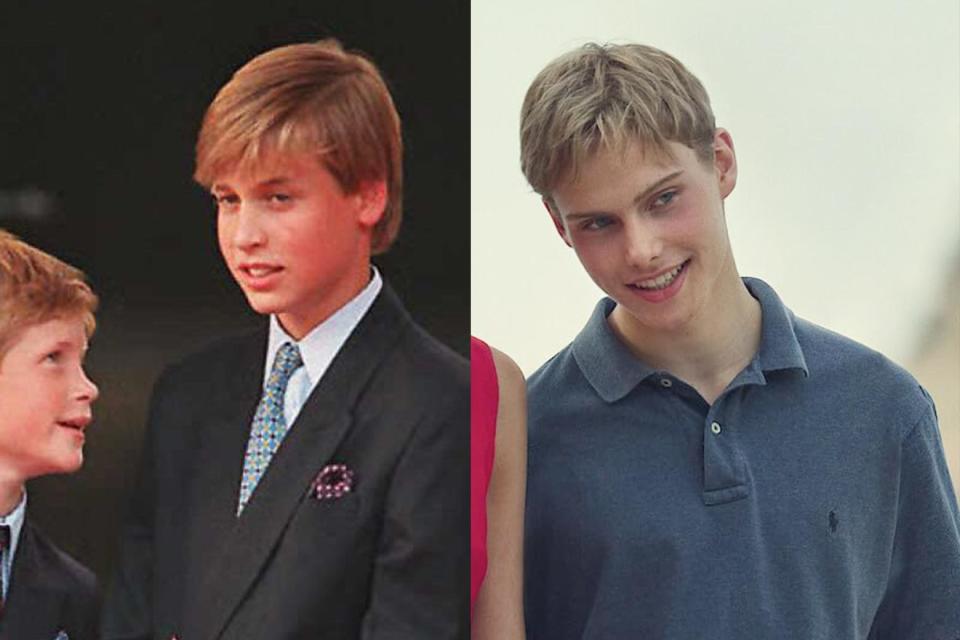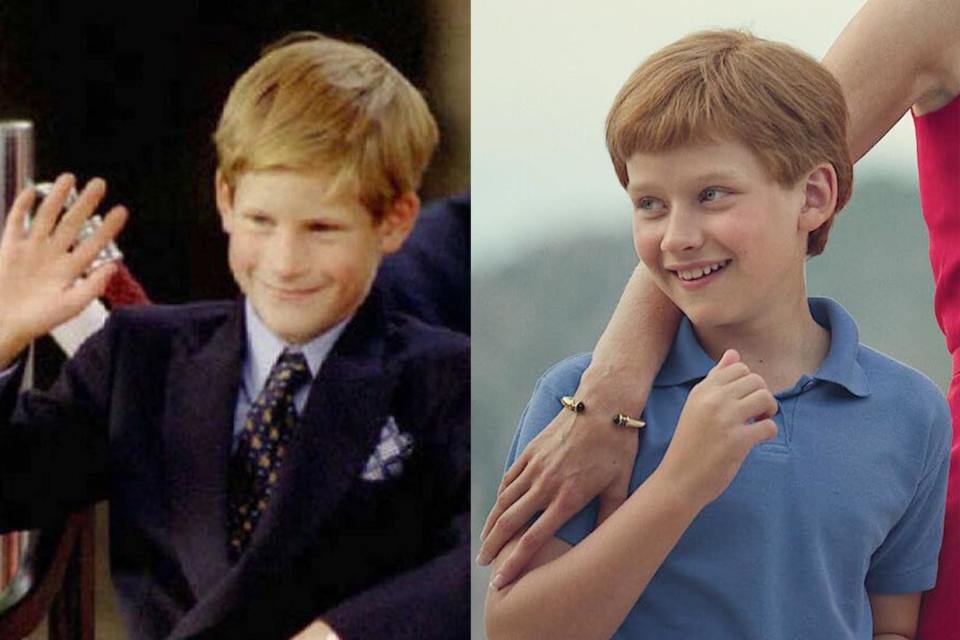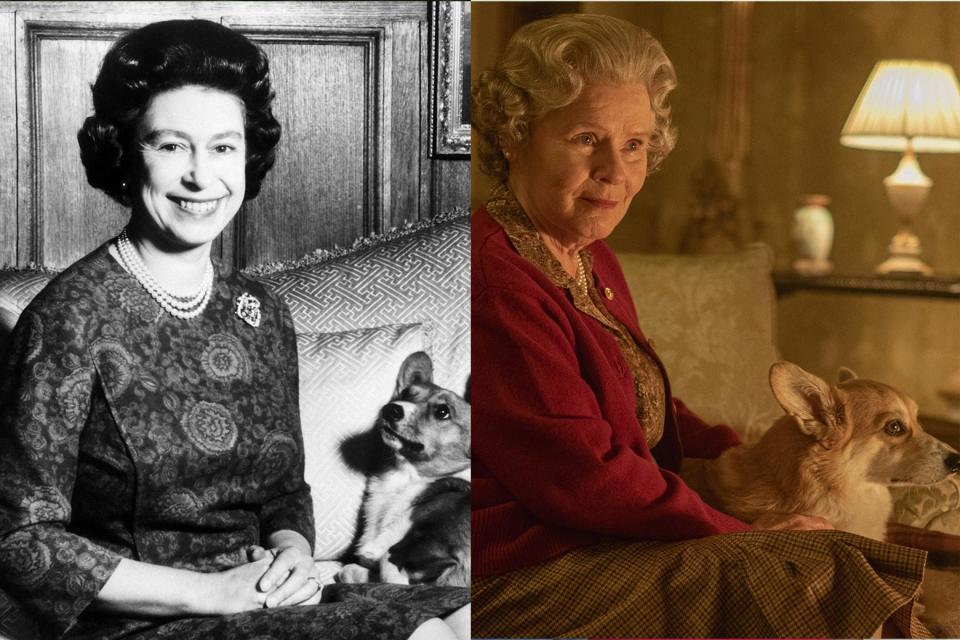What’s Fact and What’s Fiction in The Crown Season 6
Appearing with perfect timing not long after its principal character has left the world stage, the final series of The Crown brings us to the last years of Elizabeth II’s reign. The first part of Season 6 (Part 2 will be released by Netflix in December) announces its dramatic trajectory right from the start, as a Parisian walking his dog late at night spies a Mercedes limousine racing down a Seine embankment pursued by several motorbikes, then hears a sickening crash.
Dramatizing the early years of Elizabeth II’s life was a more straightforward proposition for the show, dealing with events that most of the audience had not experienced firsthand and so was unlikely to be emotionally invested in. Also, the scriptwriters had a lot less guesswork: Official notes and documents by government officials in the corridors of power at the time have since been made accessible to the public (under British law, most government notes and documents can be put in the public domain 30 years after they are created), and significant figures in the story have published a trove of memoirs and diaries.
By contrast, a large contingent of the audience has preexisting views, and indeed conspiracy theories, about the events leading up to Princess Diana’s death. Showrunner Peter Morgan has said the show “is a fictional dramatization, imagining what could have happened behind closed doors.” So, while we will never know for sure if Dodi Fayed ever actually proposed to Princess Diana (at least until those memoirs and diaries appear), or why Diana decided to make that fateful stopover in Paris before returning to London, or how the queen reacted to the news of her death, we do have Morgan’s educated guesses, deriving from psychological extrapolation blended with his dramatist’s instinct. As the emotion of the era has finally started to subside and the fog of speculation dissipates, we look at what’s fact and what’s fiction in the first four episodes of The Crown’s ultimate season.

At the start of the season, Dodi Fayed—occasional film producer and man-about-several-towns, considered to be something of a lady killer despite being under the thumb of his domineering father, Mohamed—is more or less happily engaged to American model Kelly Fisher. But then he is summoned to the family yacht by his father, who has managed to lure Diana (Elizabeth Debicki) and her sons there for a vacation and is keen for Dodi (Khalid Abdalla) to become Diana’s next husband. Dodi and Diana bond over their difficult relationships with their fathers and, with Mohamed pushing in the background, Dodi dumps his fiancée as his romance with Diana blossoms.
In reality, Fisher, who modeled in campaigns for brands such as Victoria’s Secret, Armani, and Calvin Klein, first met Dodi Fayed in Paris in July 1996. They allegedly became engaged in February 1997, with Dodi giving her a large sapphire-and-diamond ring (very similar, ironically, to the engagement ring Prince Charles gave Diana). However, only seven months later—after photographs of Dodi kissing Diana on his father’s yacht the Jonikal appeared on the cover of the British tabloid the Sunday Mirror, then everywhere else—Fisher realized that the relationship was in trouble.
Fisher retreated to the U.S., hired powerhouse lawyer Gloria Allred, and held a press conference in Beverly Hills to announce she was suing Dodi for breach of contract, claiming that Dodi had bought her the ring and had promised to buy them a house in Malibu to live in after their marriage. She also said that Dodi asked her to give up her career so she could spend more time with him and had offered her $500,000 to do so. Ultimately, she said, she received $60,000 plus a check for $200,000, which bounced.
The Fayed family, unsurprisingly, has denied that Dodi ever proposed to Fisher. As The Crown depicts, when Fisher flew to St-Tropez in July to stake her claim during Diana’s first trip to the boat, the Fayeds parked her on another, smaller yacht while she waited for Dodi to visit her in the evenings. In 2008 transcripts of calls between Fisher and Dodi were made public. In them, she accuses him of “two-timing” her, saying, “You even flew me down to St-Tropez to sit on a boat while you seduced Diana all day and fucked me all night.” In another call transcript, she asserted, “We were together the whole time. And you knew it.” Dodi, not quite the gentleman he is presented as in the drama, responded by calling Fisher “hysterical” and insisting they had already split up by the time Diana appeared on the scene.

The show depicts Diana taking up an invitation from Harrods tycoon Mohamed al-Fayed to escape both press attention and the big party Prince Charles is throwing for Camilla Parker Bowles’ 50th birthday by vacationing on his luxury yacht off the South of France. When Diana arrives on board with her two sons, al-Fayed immediately introduces William and Harry to his three younger children, who are frolicking in the yacht’s pool. As word of Diana’s presence gets out, the yacht is surrounded by paparazzi on motorboats, leading William to prefer staying on board playing Street Fighter II with Harry over swimming in the sea, where he might be photographed.
According to former BBC royal correspondent Michael Cole (speaking on a September 2022 Diana-oriented podcast), William and Harry “didn’t have things at home that other kids did” and, deprived of video games, would come to Harrods, the famous department store then owned by Mohamed al-Fayed, to play them. “They would come to the fourth floor—the toy department, the floor for the children—and they would spend hours there,” Cole said. Of course, as Harrods’ former PR director and spokesman for al-Fayed, Cole is not an entirely disinterested reporter.
At any rate, al-Fayed’s daughter Camilla recalled that not only did William and Harry have video games at home in Kensington Palace, they had a newly refurbished game room, where she and her siblings (who, far from being introduced to the princes in the summer of 1997, had known them for several years) had played computer games with William and Harry earlier in the summer. “That summer we all became a team,” she told the Daily Mail in 2010. “I was 11 at the time and my sister Jasmine was 15. We used to hang out with William and Harry all the time at Kensington Palace.” That William and Harry enjoyed playing video games either at Harrods or with Dodi’s sisters at Kensington Palace has not been verified by anyone who is not connected to the al-Fayeds.
Also, one wonders if Princess Diana, then deep into her anti–land mine campaign, was aware of the Jonikal’s provenance when she accepted al-Fayed’s invitation. It had previously belonged to the son of Adnan Khashoggi, who had sold it to his uncle Mohamed al-Fayed (whose first wife, Dodi’s mother, was Adnan Khashoggi’s sister). The elder Khashoggi was a leading arms dealer and purveyor of land mines, sales of which presumably helped pay for the yacht.

In Episode 2, an Italian paparazzo named Mario Brenna tells an interviewer that he got 250,000 pounds from the Sunday Mirror for the first pictures of Diana and Dodi kissing on the yacht deck.
If anything, this seems like an understatement. According to the Guardian, by the time Brenna had sold the photos to not only the Sunday Mirror but the Daily Mail and the Sun, he made 3 million pounds. Even grainy photographs of the pair could command 650,000 pounds, which accounts for the omnipresent packs of prowling paparazzi that constantly pursued the couple.

After their July fling on the yacht, Dodi flies Diana up to Derbyshire in the Harrods helicopter to visit a psychic, where they both inquire about their futures.
This actually happened. In 2003 professional psychic Rita Rogers told her local paper the Derbyshire Times that Diana had twice driven up from London for a consultation before she met Dodi. “I’d told her she would meet a man of foreign descent with the initial D on water—and that the man would be connected with the film industry,” Rogers declared. Apparently, Dodi was so struck by this prediction he asked to meet Rogers on Diana’s next visit. Rogers claims she told Dodi to avoid France and not to change his limo driver because she foresaw an accident in a tunnel but says she still can’t understand why she failed to envision that Diana would be involved in the same accident.
Not that Diana was short on warnings about threats to her life. It was well known that before and after her divorce she visited an assortment of psychics, spiritual advisers, and mediums; in fact, in October 1995, her divorce lawyer Lord Mishcon wrote that Diana had told him she had learned from “reliable sources” that by 1996 there would be an attempt on her life, or at least an effort to leave her severely injured or unbalanced. However, according to the official inquiry into Diana’s death, Lord Mischon did not regard these warnings relayed by the princess as remotely credible.

The program shows Diana telling Dodi that, heartily sick of being harassed by the paparazzi as well as wanting to discourage him from taking the relationship too seriously, she intends to return to London Aug. 28, sooner than expected, so she can see her sons when they return from visiting the queen at Balmoral. However, al-Fayed pressures Dodi into insisting that she fly back on the family’s private jet rather than on the British Airways flight she has booked and that they spend the night in Paris.
Al-Fayed further insists that on the way to the Ritz, Dodi’s driver take a lengthy detour out of Paris to Villa Windsor, his fancy house on the city’s outskirts that was formerly the residence of the Duke and Duchess of Windsor, so he can intimate to Diana that should she marry Dodi, the couple can live there with his children. Diana, who has no interest in either marrying Dodi or residing in the Villa, is keen to get away as soon as possible so as not to miss a scheduled phone call from her sons at Balmoral.
Indeed, Diana’s lack of interest in visiting the Villa was attested to during the inquest into her death when Reuben Murrell, the villa’s security chief, said she had had no curiosity about the house and stayed for only 28 minutes. As for al-Fayed’s motivations for insisting on the visit, the late, always-informed Dominick Dunne wrote in Vanity Fair: “I have always felt there was a subliminal meaning, part of al-Fayed’s game plan, that Dodi was taking Diana to see the house where they would live and raise their child after they were married.”
But Diana may have stopped over in Paris for her own reasons, not because of Dodi’s entreaties. Colin Tebbutt, at the time Diana’s driver and security aide in Britain, said in 2021 that she delayed her return “because the Tories were having a go at her again over landmines. She was accused of using the campaign to boost her own image, which was nasty and upset her. So she contacted us and said she didn’t want all the hassle that would be waiting for her in the UK. She would return at the weekend instead.”

Only Rita Rogers knows.